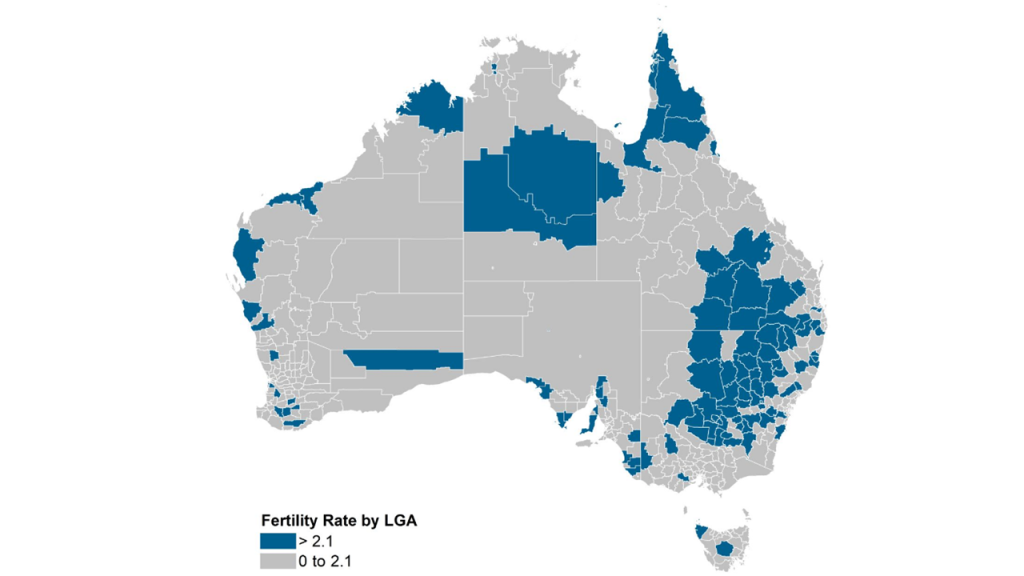This ABS release on 2021 births shows that the dark days of a dismal 1.59 national total fertility rate (TFR) are officially behind us, with the latest figures showing a return to a buoyant 1.7 – a slight, but positive increase on the pre-covid (2019) TFR of 1.67.
The story of realised fertility is however more nuanced, within which there are numerous sub-plots, evident geographically, and for reasons that are social, economic, and perhaps increasingly, environmental.
Driving the nation’s fertility rate recovery, are New South Wales and Queensland, both of which have bounced to a TFR of almost 1.8, an increase on their 2019 TFR of 1.71 and 1.73, respectively. At the same time, Victoria’s TFR has plunged to 1.52, its lowest on record.
In demographic circles, measuring natalist policy effectiveness is begrudgingly accepted as an almost impossible task. However, that Victoria’s declining TFR directly correlates with extended lockdowns, would likely attract more than a passing glance from budding Malthusians.
West of the Great Divide, from Gundagai in the south, to Emerald in the north, runs a 1,600 km corridor in which all but one of the dozens of LGAs located within it, has a TFR of at least 2.1. This includes Australia’s most fertile region, agricultural attributes aside. Located on the Queensland side of the border with New South Wales, the Shire of Paroo enjoys a TFR of 3.41 – equivalent to the national fertility rate in 1960.
A TFR over 2.1 effectively means that enough babies are being born to replace their parents. Though historically unremarkable, the significance of this phenomenon as it extends across this vast inland corridor is underlined by the fact that today, there is not a single state in the U.S., with a TFR that achieves replacement.
At the opposite end of the fertility spectrum, is the rise in the number of LGAs, albeit small, where the TFR has now fallen below one. In New Sough Wales, South Australia, and Western Australia, this is confined to the CBD-based Councils of Sydney, Adelaide, and Perth. In Victoria, the City of Melbourne – a Greens stronghold – has the lowest TFR in the country at just 0.66. It has recently been joined by neighbouring Greens council, the City of Yarra which has a TFR of .98, and the somewhat less, but increasingly Green LGA of Stonnington (0.97).
Notoriously difficult to predict, fertility rates will continue to follow societal attitudes, increasingly disparate though these might be.
Across the capital cities, the effect of declining homeownership and its negative impact on fertility intentions will continue. Meanwhile, recent speculation that fertility intentions would likely change in response to concerns about climate change is perhaps already manifesting across inner Melbourne.
For aspiring fathers, it’s important to note that male contributions to housework have now been proven to have a positive relationship with realised fertility. More time spent driving a John Deere and a Dyson, than an Apple Mac and an iPhone, will have you in Paroo in no time.
Fertility Rates, Australian Local Government Areas


